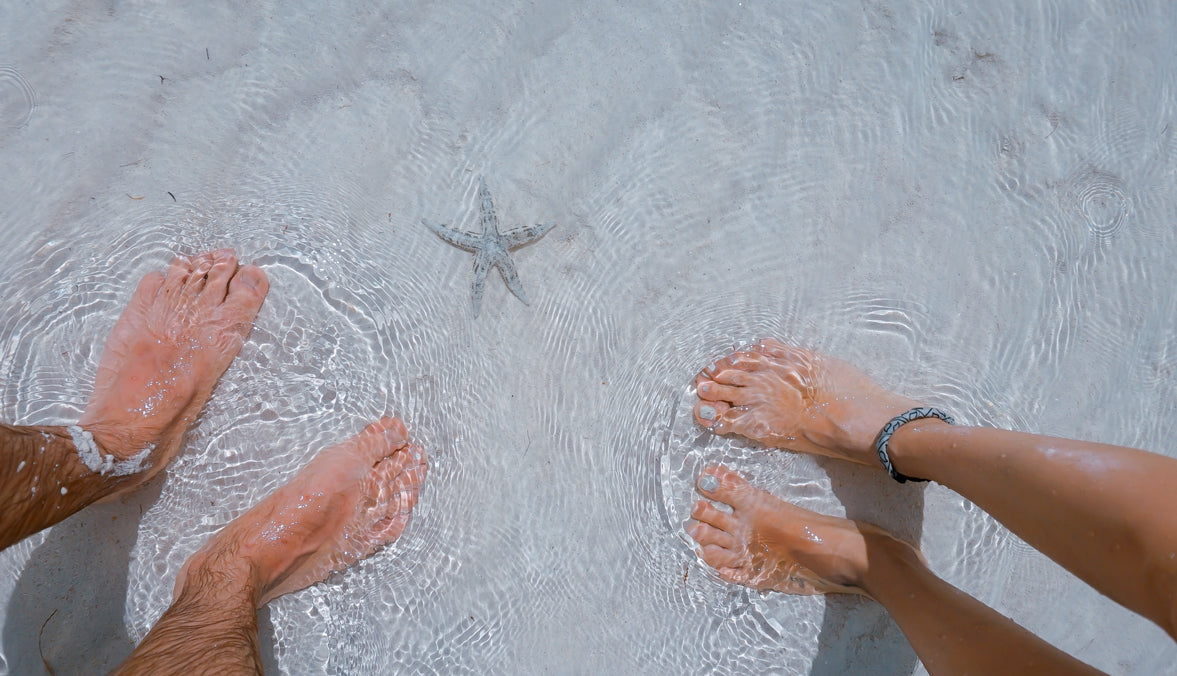
9 tips for healthy feet in summer
As the year goes by, the changes are not only in temperature but also in our foot care. For many months we have our feet covered all the time, and in other ones, we only want to walk around in flip-flops or barefoot all day long! Take note of these practical foot care tips for the transition from spring to summer.
To begin with, we must realize that our feet need to be cared for all year round, not just when we have to show them off. Many podiatrist suggest to follow these valuable tips:
1. Be aware that you should not make an abrupt transition. Do not stop wearing socks abruptly and apply antiperspirant products. When socks are no longer worn, the foot is more exposed to chafing and blisters, since cotton socks absorb the foot's moisture generated by perspiration and prevent maceration.
On the other hand, in hot weather, sweating increases, especially in the feet. You may use antiperspirant products like Shoe and Sock Spray. It is also important not to expose the feet to long walks if we have not been moving too much for months due to bad weather and restrictions (in certain countries of the world of course).
2. Do not forget to nourish your feet, wash them daily and dry them very well, especially in the spaces between the toes. In this way we prevent skin maceration due to excess moisture and the appearance of cracks in the skin, as well as fungal infection. Daily application of emollient creams on the feet improves the elasticity of the skin, and avoids as much as possible the proliferation of cracks and flaking of the skin, which often cause itching and pain. We recommend the use of Urea Foot Balm.
3. Flip-flops are for the beach and swimming pool. Wearing rubber flip-flops is advisable in bathing areas around beaches and swimming pools, which is what they are designed for. The main goal is to prevent the spread of infections such as fungus and papillomas that can appear if we walk barefoot in these environments, so we should not walk without footwear in swimming pools or public baths.
It is not convenient to wear them for intensive use or for medium or long distances, since they do not provide sufficient support for the foot, forcing you to walk with excessively flexed toes, which can lead to deformities such as claw toes or hammer toes.
4. Diabetic patients should take special care when walking barefoot on the beach. Pay attention to sharp or pointed elements that may be found (pieces of shells, rocks, etc.). Wounds or injuries to the feet are always difficult to heal and put the feet at risk.
5. Be careful with strappy sandals. This type of sandal should not compress areas of the foot that are prominent or deformed, thus avoiding the formation of painful chafing and calluses.
6. Avoid wearing flat shoes. Be careful with flat shoes with very thin soles and without any height in the heel for prolonged use when walking. They do not have the necessary cushioning for the shocks that occur when walking, so that the foot receives impacts continuously. Flat shoes can cause long-lasting and sometimes disabling ailments, such as plantar fasciitis (inflammation of the thick connective tissue that joins the heel to the toes), talalgias (Heel pain), among others.
7. Footwear with natural leather, breathable materials and ventilated sports shoes are better. This type of material avoids the heat accumulation and perspiration. Those made of synthetic materials hinder the evaporation of sweat and increase the temperature of the feet.
If we wear sports shoes very often, it is advisable to have more than one pair to allow a minimum of 24 or 48 hours of ventilation between putting them on and off and to be able to alternate their use. Shoes made of perforated or mesh materials and finished in leather are the best choice.
8. Nails should not be forgotten and should not be painted all the time. It is important to cut the nails correctly, always straight and square. This will prevent them from digging into the sides and causing pain and infections in the skin of the fingers. If we paint our nails in summer, remove the polishes periodically to allow the nails to have a minimum of transpiration and reduce the penetration of the chemical components of the polishes in the thickness of the nail, which would end up weakening it, and modifying its natural color.
9. Walking along the beach shore is beneficial. It is beneficial as long as we adjust the distances to the capacities and possibilities of supporting the muscular effort to which we expose the feet in this situation. Feet with an increased or decreased plantar arch can feel fatigue much earlier than a foot with a normalized arch.
Woao,! Every day we have more details of our foot care that we hope will be useful for you or someone you know may need it.
Thank you for your continued trust in us, and see you next time!








